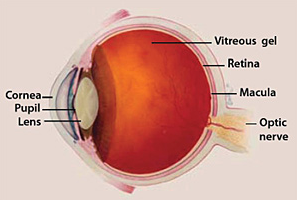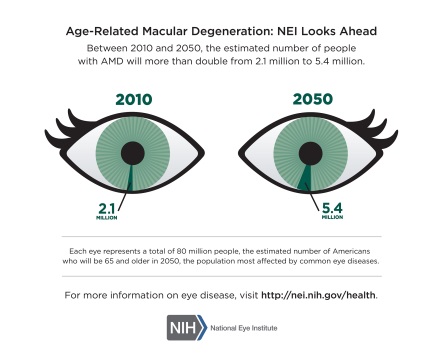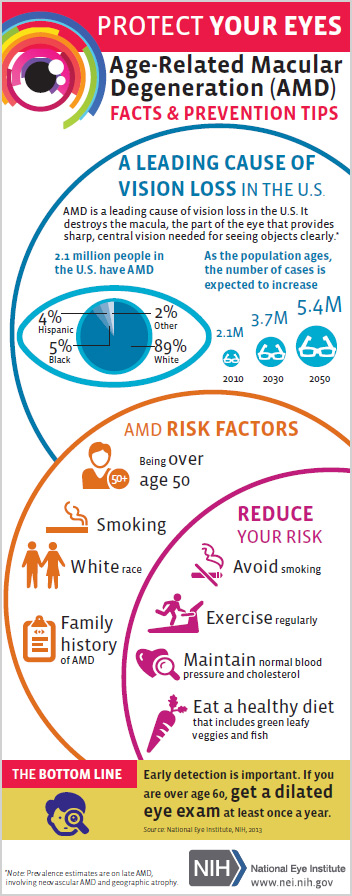Mom began to complain about a blurry spot in the middle of her vision while reading; something she loves to do every day. Threading needles for her quilting was also harder and we helped her out by pre-threading them and pinning them to her sewing room curtain. Little did we know that she was experiencing some of the most common symptoms of Age-related macular degeneration (ARMD or AMD).
AMD — is the deterioration of the macula, the small central area of the retina of the eye responsible for visual acuity. The health of the macula determines our ability to read, recognize faces, drive, watch television, use a computer, and perform any other visual task that requires us to see fine detail.

According to Friends for Sight, a nonprofit organization dedicated to saving sight, ARMD affects 1.65 million individuals in the United States and is the leading cause of vision loss in people older than 65 years. Due to the aging of the U.S. population, the number of people affected by AMD is expected to increase significantly in the years ahead.
According to a recent study by university researchers and the U.S. Centers for Disease Control and Prevention (CDC), approximately 6.5 percent of Americans age 40 and older have some degree of macular , which explains why when mom began sharing her diagnosis with her friends, several of them also admitted to struggling with reading and seeing small print, just like her!
Macular degeneration is diagnosed as either dry or wet. In dry AMD, there is new growth of blood vessels in the retina where they are not supposed to be. About 85 to 90 percent of AMD patients are diagnosed with dry AMD. Doctors believe it may result from the aging and thinning of macular tissues, the depositing of pigment in the macula or a combination of the two.
Dry macular degeneration is diagnosed when yellowish spots known as drusen begin to accumulate in and around the macula. It is believed these spots are deposits or debris from deteriorating tissue. Gradual central vision loss may occur with dry macular degeneration. Like my mum, most people begin to first experience difficulties with reading small print such as on their medication bottles or their mail.

In wet macular degeneration new blood vessels grow beneath the retina and leak blood and fluid. This leakage causes permanent damage to light-sensitive retinal cells, which die off and create blind spots in central vision.
AMD usually produces a slow, painless loss of vision. In rare cases, however, vision loss can be sudden. Early signs of vision loss from AMD include shadowy areas in central vision or unusually fuzzy or distorted vision.
Risk factors for macular degeneration include having a family member with AMD, high blood pressure, lighter eye color, diabetes, obesity, poor nutrition and inactivity.High levels of dietary fat also may be a risk factor for developing AMD.
Although there is no cure for age-related macular degeneration, there are some treatments which may delay its progression or even improve vision. Many doctors may recommend a type of nutritional intervention such as taking a good multi-vitamin, may help prevent its progression to the wet form. These dietary modifications are also beneficial to one’s overall health as well. individuals with diabetes. For example, some studies have suggested a diet that includes plenty of salmon and other cold water fish, which contain high amounts of omega-3 fatty acids, may help prevent AMD or reduce the risk of its progression.

As you age, particularly if you are a diabetic, make certain to be aware of the risk factors associated with AMD. Maintain a healthy lifestyle including good nutritional choices and exercise.And, don’t forget, visit your eye doctor and general practitioner annually. If you do find that you are struggling with some of the side affects of ARMD, call the staff at VRS for assistance. We can help you learn how to use some basic tools and strategies to see you best and to continue to do the things you love, even with ARMD.
